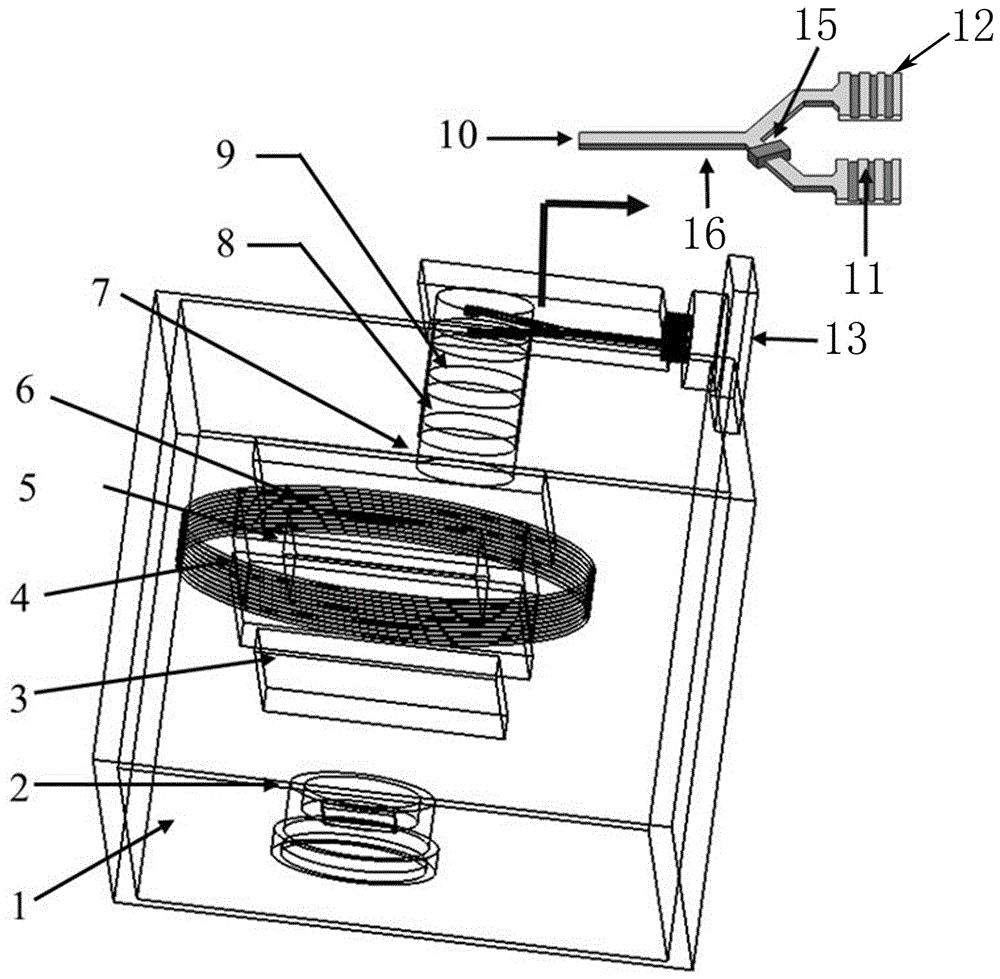End-coupling nano optical waveguide type dual-optical-path chip-scale atomic clock
A chip-level atomic clock and end-face coupling technology, which is applied in the field of optics and micro-nano systems, can solve the problems of reducing the short-term frequency stability of chip-level atomic clocks, large amplitude noise, and large fluctuation noise of optical frequency, so as to improve the short-term stability, The effect of improving mid- and long-term stability and reducing optical power fluctuation and frequency fluctuation noise
- Summary
- Abstract
- Description
- Claims
- Application Information
AI Technical Summary
Problems solved by technology
Method used
Image
Examples
Embodiment 1
[0022] A vertically coupled nano-optical waveguide dual-optical chip-scale atomic clock (single gas chamber), such as image 3 As shown, it includes a VCSEL laser 13, the light beam emitted by the VCSEL laser 13 is coupled into the Y-waveguide beam splitter 16 through the end-face coupling input port 10, and the end-face coupling input port realizes the coupling input of the VCSEL collimated and isolated laser light source (the coupling efficiency is excellent 80%), through the coupling alignment technology and the nano-Y-type waveguide for precise docking; one of the beams of light passes through the phase modulation unit 15 (modulation electrode) to generate coherent light with a constant phase difference and then output, and the other beam of light is adjusted by the ohmic electrode The output is compensated in accordance with the modulation optical path. For example, one path of guided wave beam can be modulated at 3.4GHz to produce a sideband with a frequency difference of...
Embodiment 2
[0026]A vertically coupled nano-optical waveguide dual optical path chip-scale atomic clock (dual gas chamber), which differs from Embodiment 1 in that it adopts double gas chambers, adopts on-site preparation of rubidium atoms, and puts reaction medicine 18 in reaction gas chamber 17 to prepare The rubidium atom gas enters into the photoaction gas chamber 14. The rest of the principles are the same as in Embodiment 1. The two beams of light emitted from the micro-air chamber reach the two-phase detection chips at the same time, that is, the detection unit 2 converts it into an electrical signal and then inputs it into the subtractor. Subtracting the signals is a clock that eliminates common-mode noise The signal is input to the integrated circuit chip, and the integrated circuit chip completes the regulation of the laser and the phase modulation unit. The subtractor and the integrated circuit chip are integrated in the circuit module 19, and output the control signal through t...
PUM
 Login to View More
Login to View More Abstract
Description
Claims
Application Information
 Login to View More
Login to View More - R&D
- Intellectual Property
- Life Sciences
- Materials
- Tech Scout
- Unparalleled Data Quality
- Higher Quality Content
- 60% Fewer Hallucinations
Browse by: Latest US Patents, China's latest patents, Technical Efficacy Thesaurus, Application Domain, Technology Topic, Popular Technical Reports.
© 2025 PatSnap. All rights reserved.Legal|Privacy policy|Modern Slavery Act Transparency Statement|Sitemap|About US| Contact US: help@patsnap.com



